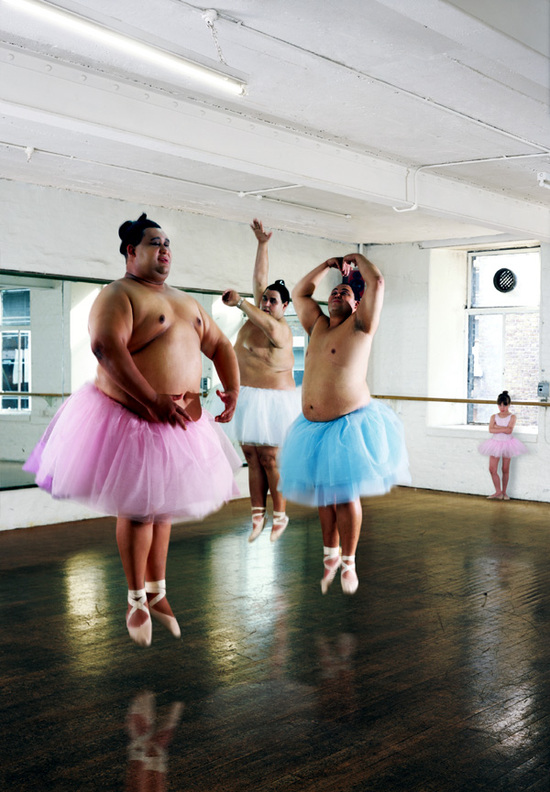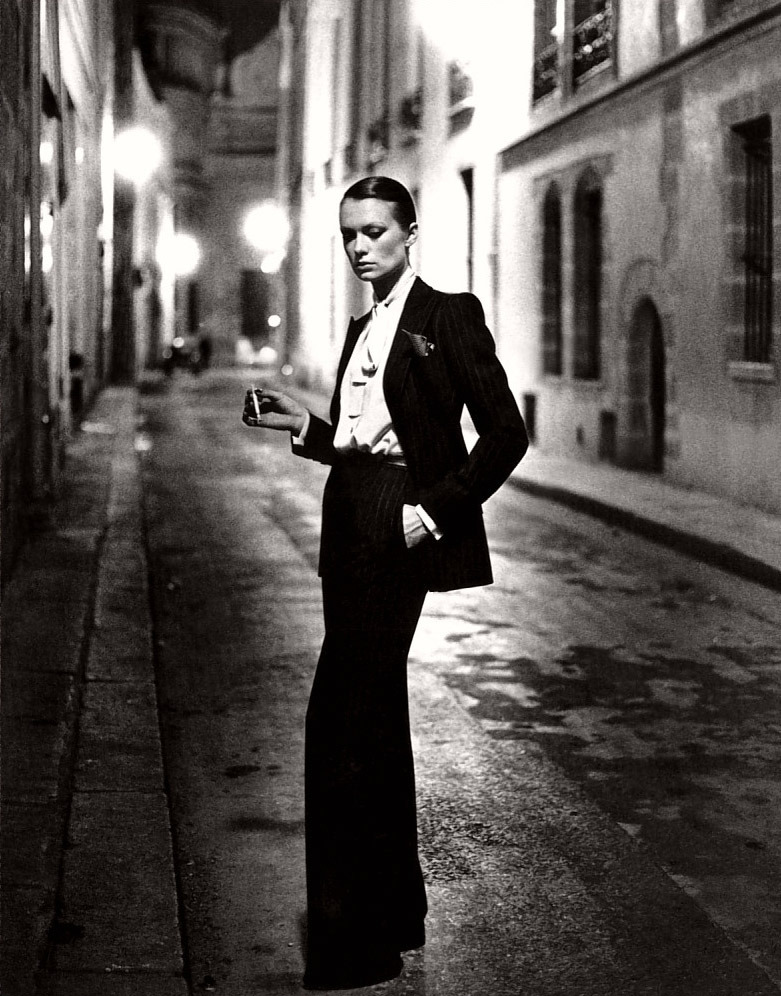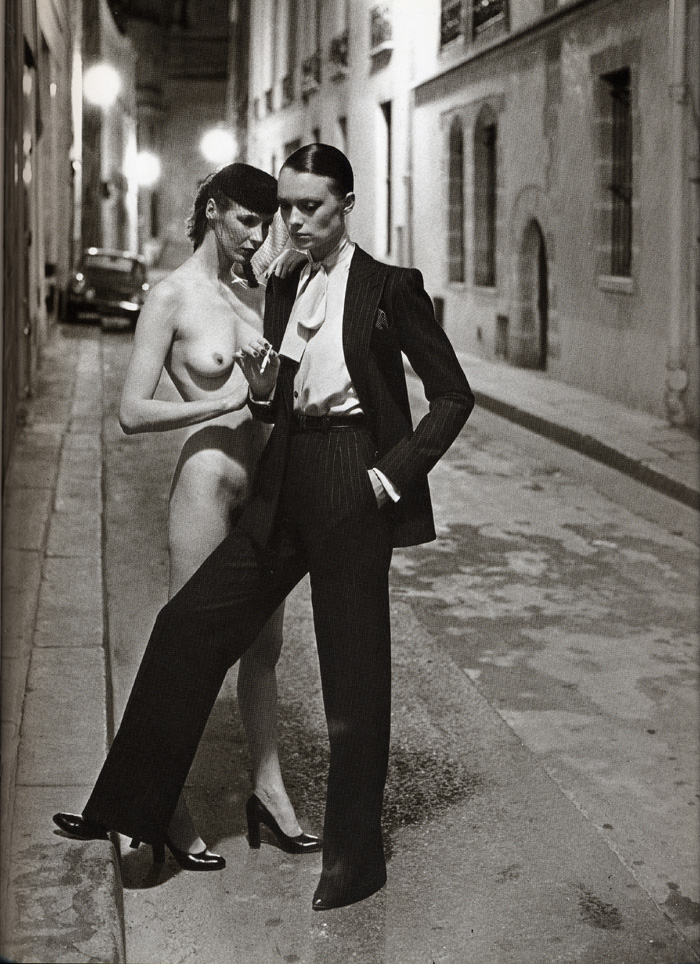This series of iconic photographs was taken by fashion
photography legend Helmut Newton in 1975 for French Vogue, advertising
the Yves Saint-Laurent Le Smoking
Tuxedo for women. The series (particularly the first photograph)
has since become one of the most famous in fashion photography, and
Yves Saint-Laurent has been praised for being one of the first
well-respected fashion designers to create a design for women that
embodied the high-powered esteem of men.It is interesting that the
tuxedo here is taken as the symbol of all that is good about
masculinity -- power, control, dominance, action, success -- so that by
merely wearing the article of clothing, the woman is able to transcend
her lowly social status and possess all that is valued in men. In
the fist photograph, a woman stands alone, hair slicked back, gaze
aloof, and emanating male body language, with her left leg confidently
bent forward, her hand in her suit pocket, and her other holding a
cigarette. She is hinting, both through her body language and
clothing, at male attributes, and yet her body itself is shaped as a
woman's. This violates the viewer's expectations -- now, as well
as when it was originally published in 1975. The second
photograph shows the same woman, this time standing with a nude woman.
The second woman's feminine hat, heels, and lack of clothing
render her passive and recognizably female. She stands behind the
woman in the tuxedo, demurely gazing past her masculine company,
placing both her hands on the suited woman, while the woman in the
tuxedo continues to hold her hands in almost the exact same positions
as the previous photograph, as if oblivious to the newcomer's presence.
The most noticeable difference is that now, the woman in the
tuxedo places her leg upon the sidewalk, as if forming a barrier in
front of the nude woman.
This positioning recalls gender
norms on a variety of levels. First, the "woman" is placed behind
the "man," showing who is in control and dominant. Second, she
attempts to be emotionally and physically engaged, whereas the "man"
responds with an emotionally collected indifference and masculine
authority. The third photograph blatantly reveals the
homoeroticism of the first two photographs. Again, the gender
roles are made clear not only through clothing, but through body
language as well, the "man" with "his" hand ever in "his" pant pocket,
"his" other pulling the "woman" in toward "him" (notice how it is not
until the subject turns to sex that the "man" actively touches the
"woman," naturalizing both the male preoccupation with sex, as well as
the female yearning for emotional intimacy). Then as now, the
series has been considered to be provocative, but also highly erotic in
its creation of a fantasy in which some women assume traditionally male
gender roles and clothing, while others retain their femininity through
nudity, docility, and sexuality.
 |
Contrast this series with the fourth
photograph (left), an advertisement for Swatch watches, published in
2006. Here, three Japanese sumo wrestlers are depicted performing
ballet in pastel colored tutus. A young girl stands in the
background with her arms crossed as if to say, "Let me show you how it's really done."
In opposition to the first series, this advertisement is meant to
be humorous. Not only are these men in women's clothing, but they
are sumo wrestlers, known for their violent displays of masculinity,
here pictured engaging in the gentle feminine act of ballet. The
men have invaded the woman's domain, and in the process, have made
fools out of themselves. Perhaps the reason why the first series
is seen as erotic rather than humorous is because the male sphere is a
privileged one, and one that women should
want to be a part of, while the female sphere is less desirable, and
the thought of a man wanting to become a part of it strikes the
audience as absurd. Perhaps that is the reason why the man in the
center (quite subtly) looks at his watch, checking the time as if to
finally be done with this ridiculousness.
|
|



